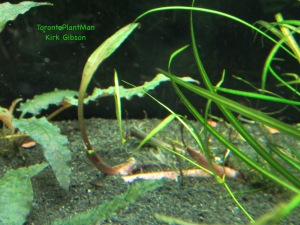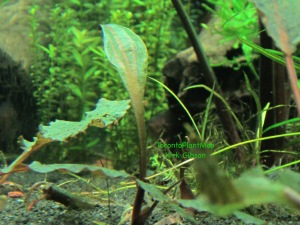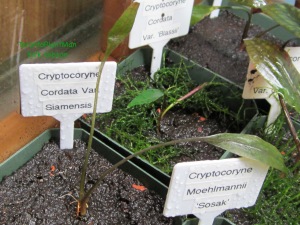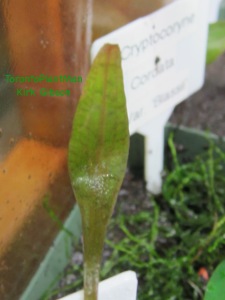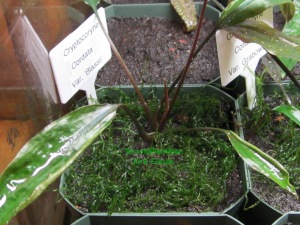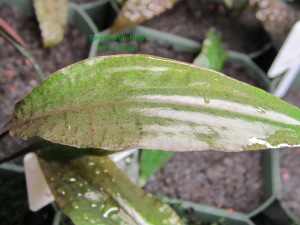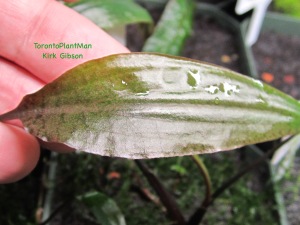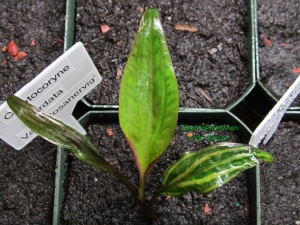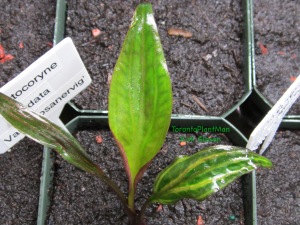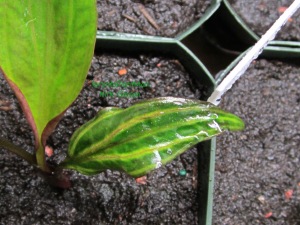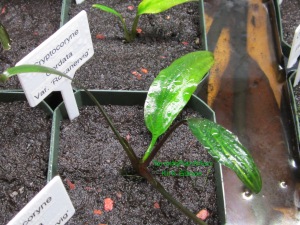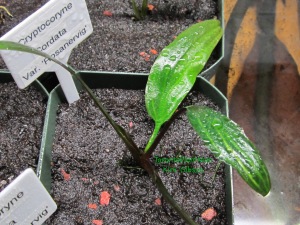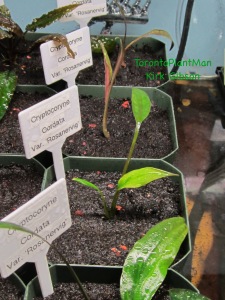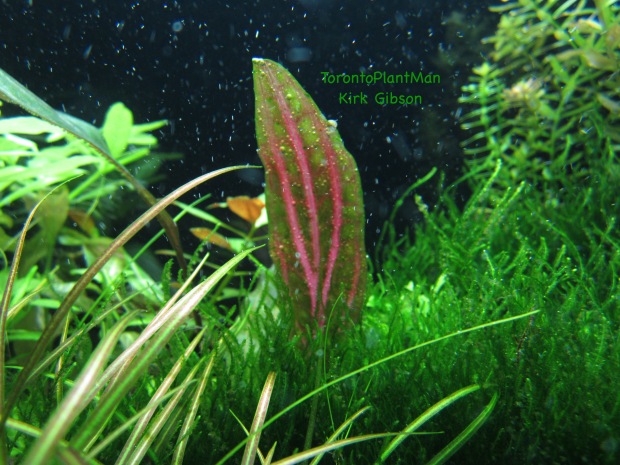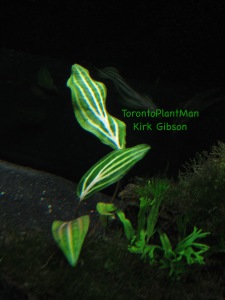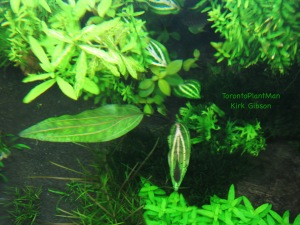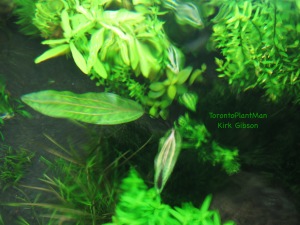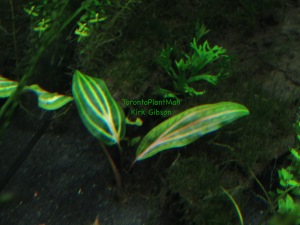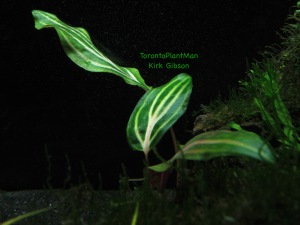Cryptocoryne Cordata Var. Siamensis ‘Rosanervig’ is a very rare yet controversial plant due to it’s white/pink veining that no one has been able to put a thumb on. We do know that the veining is due to a virus, however the veining seems to either be very pronounced or not pronounced at all depending upon the set up they are in.
I have seen this species under high light conditions (60+ PAR) with it’s veining still present and very deep, while also seeing this species in another set up with med/high light where hardly any veining is pronounced.
For me personally I have only been able to get deep/rich white/pink veining to display under lower light conditions like you’ll see with this runner hidden behind a piece of driftwood…
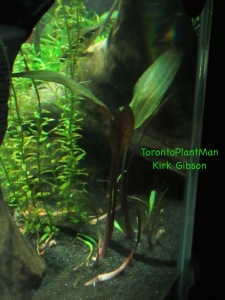
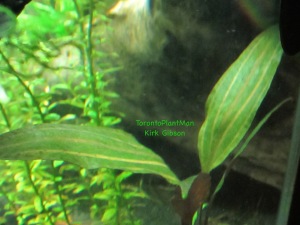
HOWEVER; I also have a runner in the front of my tank where the light is MUCH brighter (60+ PAR) and you can clearly see a pronounced pink/white vein, although it is not as “thick” as the one hidden behind the driftwood.
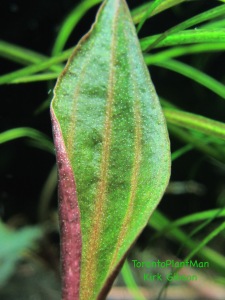
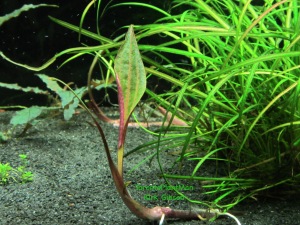
This is a new leaf forming off the mother plant, the mother unfortunately does not have the greatest veining but the plant is an absolute monster at almost 18+ inches tall and constantly sending 10-15 runners every 6-8 months.
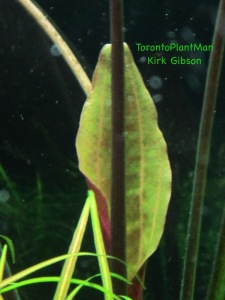
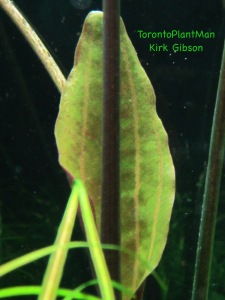
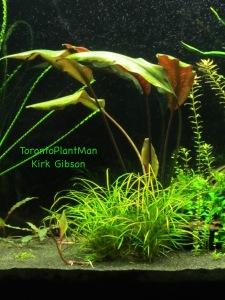
Here are more runners, in total I have six runners currently popping up, all ranging in size from tiny plants just forming to daughters that have 2-3 leaves.
As always here are the specs the plant is kept in:
PH- 7.4 at night, 6.5 during the day when CO2 is on.
Temperature- 74-76
Lighting- 30″ Dual bulb T5HO – 6700k and Rosette bulb (10 hours per day). 24″ Dual bulb T5HO – 6700k and Rosette bulb (8 hours per day)
Filtration- Marineland C220 Canister Filter
Substrate- Flourite Dark, Flourite Red, Flourite Black Sand, Muriate of Potash, Dolomite, Mineralized Top Soil, and Natural red clay from the earth.
Water Changes- X 1 a week 50%
Dosing- Alternate Micro and Macro ( 1 day Micro, 1 Day Macro, etc) KNO3, KH2PO4, KS2O4, and Plantex CSM+B.
CO2 – Dual Stage Concoa 212 with Parker H3l, Fabco Solenoid, bubble counter and 15LB CO2 Tank. 2 BPS via inline diffuser on canister outlet line.

